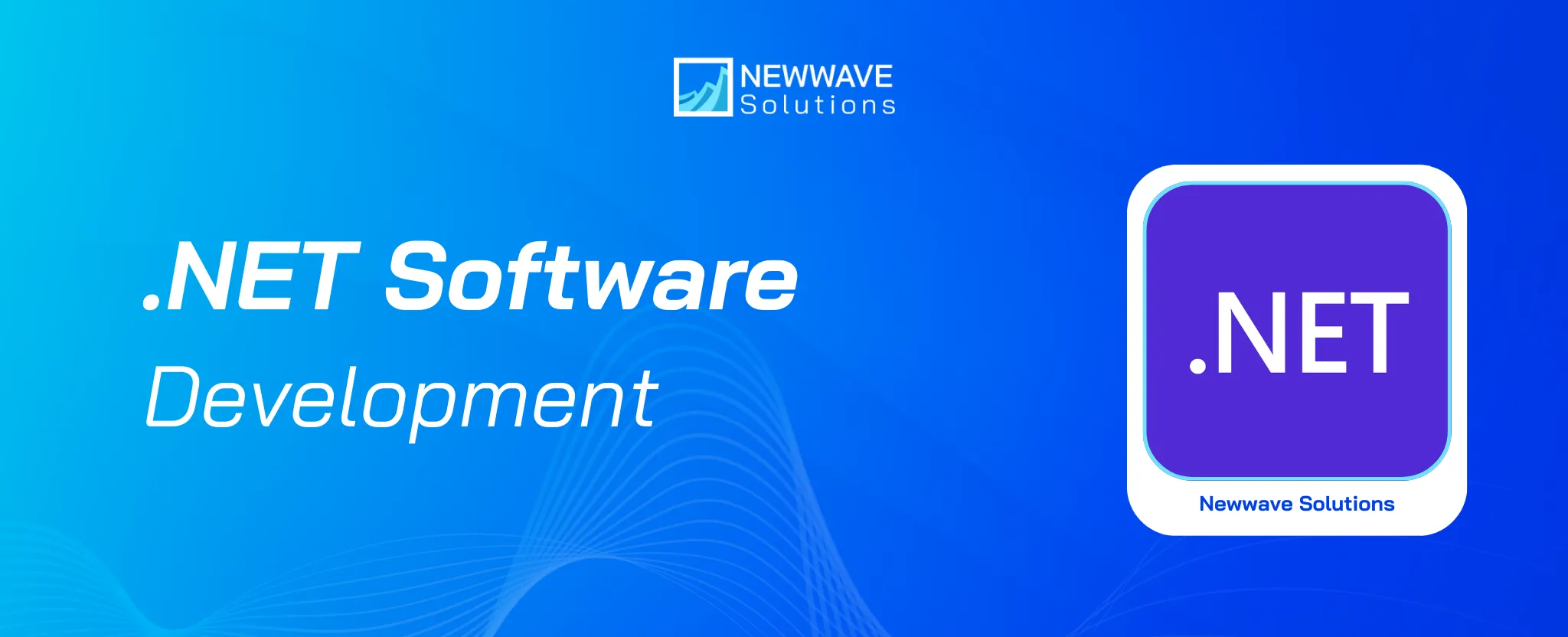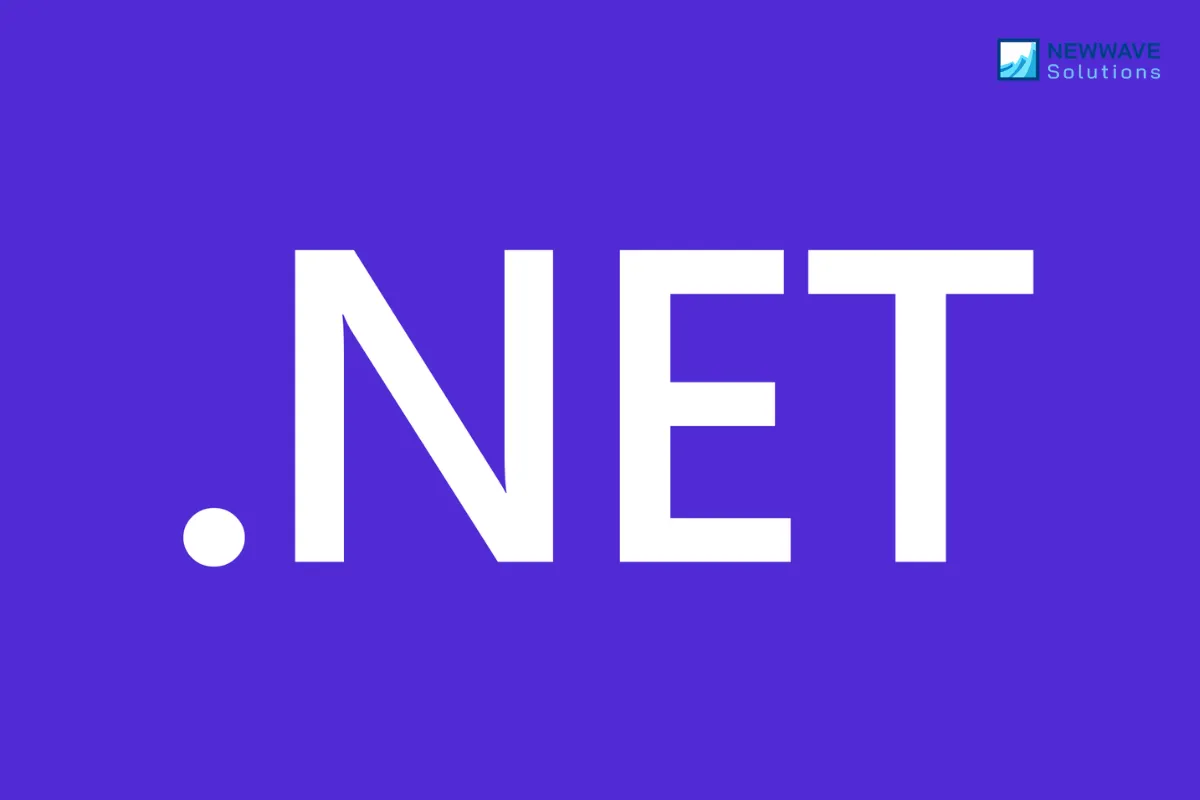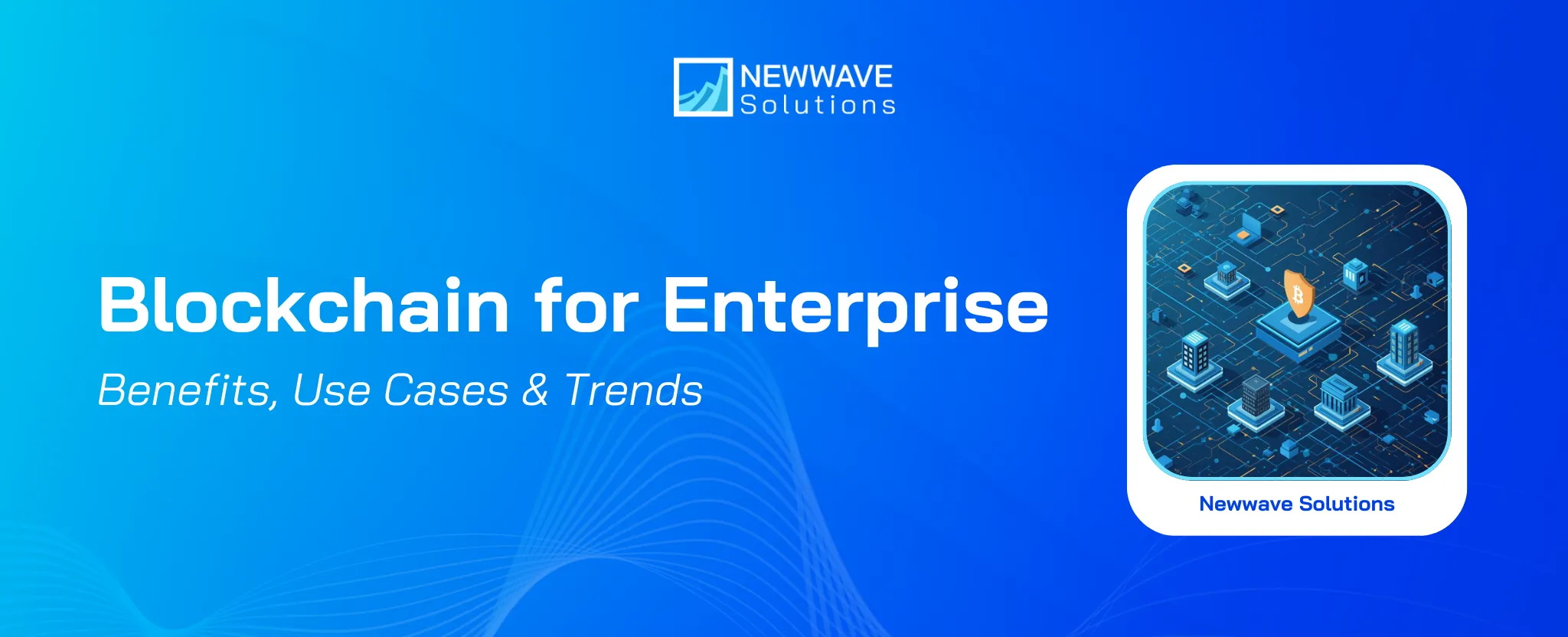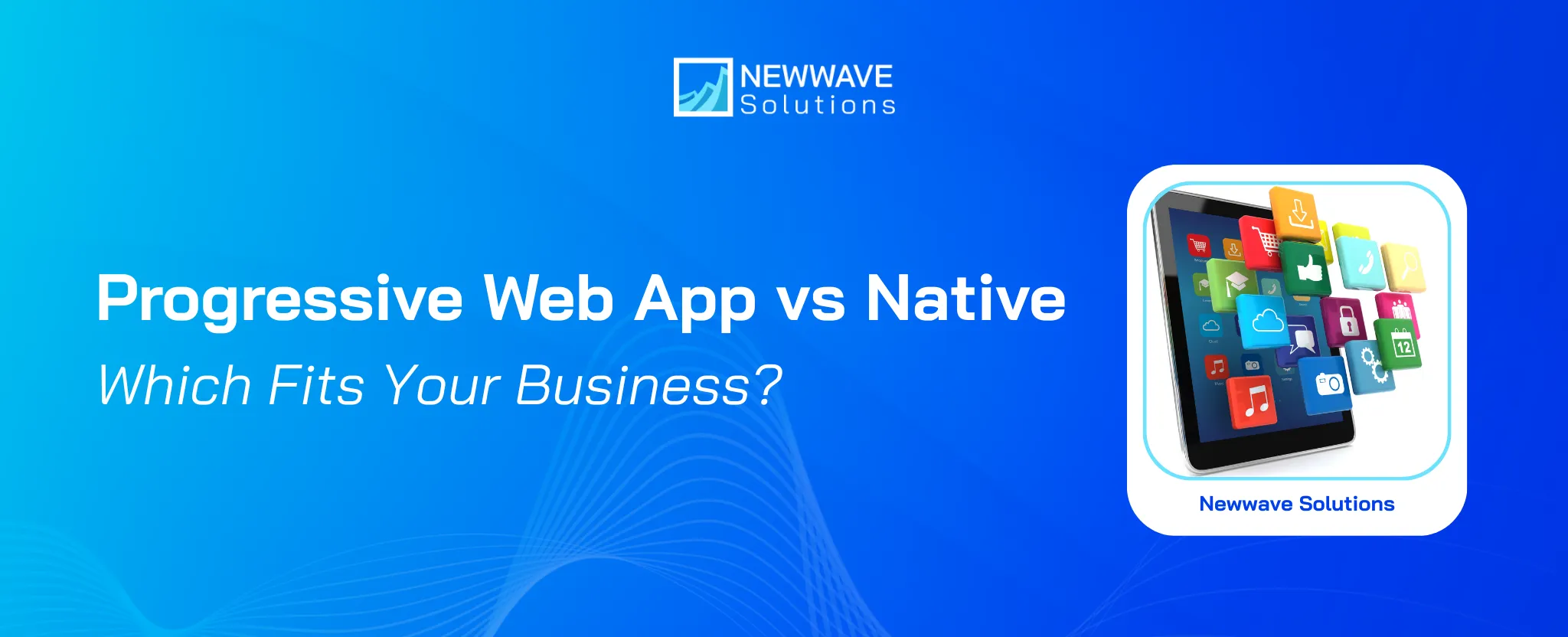.NET Software Development: From Legacy to Cloud-Native

Many organizations face the same challenge: building software that not only works but also adapts to rapid change. Security, scalability, and cross-platform compatibility are no longer “nice-to-have” — they’re essential. This is where .NET develstands out. In this article, Newwave Solutions provides a comprehensive overview of .NET software development and why global enterprises choose it as a cornerstone of their technology strategy.
What is .NET Software Development?

At its core, .NET (dotNET) is an open-source, cross-platform framework developed by Microsoft. Originally introduced in the early 2000s, it has evolved through multiple phases, from the Windows-bound .NET Framework, to the lightweight and modular .NET Core in 2016, and finally into a unified platform simply called .NET (from version 5 onward). This shift brought true cross-platform support for Windows, Linux, macOS, Docker containers, and leading cloud providers such as Azure and AWS.
The framework provides two main building blocks:
- Common Language Runtime (CLR): the execution engine that manages code execution, memory, and security.
- Framework Class Library (FCL): a vast collection of reusable components, APIs, and utilities that speed up development.
Today, .NET stands as a mature and versatile platform, supporting multiple languages like C#, F#, and VB.NET, while empowering enterprises to build secure, scalable, and high-performance applications aligned with the demands of digital transformation.
That’s why global enterprises don’t just use .NET out of the box—they rely on custom .NET development services to align technology with strategy. By tailoring .NET to industry-specific needs, businesses can modernize legacy ERP or CRM systems, accelerate cloud migration, and design applications that deliver measurable ROI through lower infrastructure costs, faster release cycles, and enterprise-grade security.
What Are the Key Benefits of .NET for Modern Applications?
When choosing a framework, one of the biggest considerations is whether it can support long-term scalability and integration needs. .NET brings several strengths that have made it a trusted choice for enterprises worldwide:
1. Platform Independence
.NET applications run smoothly across Windows, Linux, macOS, and major cloud environments, making it a platform-agnostic choice. This versatility enables developers to build web services, mobile apps, and enterprise systems without locking businesses into a single OS or vendor.
Interestingly, over 25% of professional developers now use .NET 5+ (Stack Overflow 2024 survey), reflecting strong adoption of the modern, cross-platform framework.
>> .NET isn’t the only cross-platform option, read to learn more about Java development in our full guide.
2. High performance & scalability
With Just-In-Time (JIT) compilation and a mature runtime, .NET efficiently handles high-traffic, computationally intensive applications. Developers can also leverage Ahead-Of-Time (AOT) compilation for faster startup and lower memory footprint in cloud-native and microservices environments. In practical benchmarks, modern .NET applications achieve high throughput and low latency, competitive with Java and surpassing many Node.js implementations.
3. Built-in Security and Reliability
Security is a paramount concern for any digital product, and .NET addresses this with robust built-in features. The framework includes powerful authentication and encryption protocols, as well as a managed memory environment that significantly reduces common vulnerabilities. This makes .NET software development a trusted and reliable choice for building mission-critical and enterprise-level systems.
4. Rich Ecosystem and Developer Tools
The .NET ecosystem offers thousands of NuGet packages, libraries, and open-source contributions. Integrated tools like Visual Studio IDE simplify development, testing, and deployment, while cloud integration with Azure, AWS, and Kubernetes ensures DevOps-friendly, container-ready applications.
5. Continuous updates
Version updates in .NET 7 and the upcoming .NET 8 bring tangible improvements — faster runtime, lower memory footprint, better microservices support, and enhanced cloud integration. For example, in ASP.NET Core 8, applications compiled with Native AOT achieved approximately 77% faster startup times, 87% lower memory usage, and up to 12% higher request throughput compared to previous implementations.
What Are the Limitations of .NET?
Even a versatile framework like .NET comes with trade-offs. Being aware of these helps businesses plan better roadmaps and mitigate potential challenges.
1. License considerations
While the core .NET runtime is open-source and free, certain enterprise-grade tools — such as Visual Studio Enterprise or advanced testing/debugging suites — require paid licenses. For smaller organizations or startups, these costs can impact the overall project budget. Proper planning and selective use of tools can help balance capability and cost.
2. Initial Complexity and Learning Curve
The expansive .NET ecosystem, covering web, desktop, cloud, and IoT – can present a steep learning curve for new developers. Structured onboarding, modular architecture, and DevOps best practices can help teams ramp up efficiently.
3. Runtime footprint
Compared to lightweight stacks like Node.js or Python-based frameworks, .NET applications generally have a larger memory and disk footprint. In containerized deployments or microservices architectures, this can affect startup times and resource allocation, requiring careful planning of infrastructure and cloud resources.
4. The Native Experience Gap
.NET’s cross-platform tools (like MAUI) build apps for both iOS and Android from one codebase. This is efficient, but the apps can sometimes feel slightly less fluid or responsive than those built with native languages like Swift or Kotlin. For most apps this is fine, but for performance-critical applications like intense games or pixel-perfect interfaces, this trade-off in ultimate performance and polish can be a significant drawback.
5. The Update Overhead
Microsoft’s frequent .NET updates deliver great new features but require ongoing maintenance. Teams must regularly invest time to upgrade their projects to newer versions to maintain security and support. This process involves testing for bugs, updating code, and checking compatibility, which diverts resources from building new features. While necessary, this creates a recurring “tax” on development time to keep the application current and secure.
What is .NET Software Development used for?
.NET software development is a versatile, powerhouse framework used by enterprises and startups alike to build modern, scalable, and high-performance applications—from enterprise-grade web APIs and cloud-native systems to cross-platform mobile apps and immersive video games. Its core value lies in delivering a robust, secure, and efficient environment that simplifies development, reduces costs, and reliably meets the demanding needs of today’s users and businesses:
1. Enterprise Applications
.NET is the backbone for large-scale, mission-critical systems in finance, healthcare, and logistics, where stability, security, and compliance are non-negotiable. It provides the robust architecture needed to modernize legacy systems—like outdated ERP or CRM platforms—without introducing risk. Built-in features like strong type safety, automatic memory management, and integrated security frameworks ensure these complex applications can handle immense workloads while adhering to strict regulations like HIPAA or SOX.
Example: Bank of America used .NET development to overhaul its core banking platforms. By building with ASP.NET Core and a microservices architecture, they achieved lower transaction latency, higher system reliability, and seamless compliance, all while reducing infrastructure costs through scalable cloud deployment.
>> View more our enterprise software development services as ERP development solutions and CRM development solutions
2. Web Applications & APIs
.NET development is a powerhouse for building modern web applications and APIs, offering the speed, scalability, and reliability that businesses demand today. Whether you’re creating a customer-facing web app or a critical backend API, tools like ASP.NET Core provide a robust foundation that simplifies complex tasks and performs brilliantly under pressure.
Here’s why .NET is a top choice for web and API projects:
- Blazing Fast Performance: At its heart, ASP.NET Core uses the high-performance Kestrel web server and an asynchronous programming model. This means it can efficiently handle millions of users simultaneously without slowing down, ensuring a smooth experience even during traffic spikes.
- Built to Scale: Applications built with .NET are designed to grow with your business. They can easily scale out across multiple servers or cloud environments to meet increasing demand, making them perfect for SaaS products, e-commerce platforms, and high-traffic services.
- Simplified Maintenance & Security: The framework includes built-in features for security, routing, and dependency injection, which help developers write cleaner, more secure, and more maintainable code right from the start. This reduces long-term costs and risks.
.NET is ideally suited for:
- SaaS Platforms: Subscription-based software services that require secure, multi-tenant architecture.
- E-commerce Sites: Online stores that need to manage high traffic, process transactions securely, and integrate with payment gateways.
- Real-Time Applications: Chat apps, live notifications, and collaborative tools that use technologies like WebSockets.
- Robust API Backends: RESTful or GraphQL APIs that serve data to web, mobile, or desktop clients reliably and securely.
This is precisely where professional web app development services and API Development Services prove invaluable. They leverage the .NET framework to architect solutions that are not only powerful and responsive but also secure and cost-effective to maintain over time.
Example: Stack Overflow, built on ASP.NET, reliably serves millions of developers daily. The platform leverages .NET’s efficient async processing to manage countless database queries, maintaining lightning-fast response times and demonstrating exceptional resilience under extreme traffic.
3. Cloud-Native Solutions
.NET is engineered for the cloud, enabling businesses to build flexible, cost-effective, and scalable microservices and serverless applications. It offers full support for major platforms like Azure, AWS, and Google Cloud, preventing vendor lock-in. Features like Ahead-of-Time (AOT) compilation create applications that start instantly, use less memory, and scale dynamically—perfect for modern DevOps and containerized environments like Docker and Kubernetes.
Example: Siemens Healthineers deployed .NET microservices on Azure Kubernetes Service to process medical imaging data. The framework’s container-friendly design led to faster processing speeds, reduced resource consumption, and enhanced reliability, directly improving patient care efficiency.
4. Mobile Applications
.NET development streamlines cross-platform mobile creation, enabling teams to build for both iOS and Android from a single C# codebase using .NET MAUI or Xamarin. This strategy maximizes code reuse—dramatically cutting development time, cost, and maintenance effort—while delivering robust, native-like performance for most business, utility, and data-driven apps.
While highly complex, graphics-intensive interfaces may benefit from platform-specific optimizations, .NET offers the ideal balance of efficiency and capability for most projects:
- Single codebase for iOS + Android
- Faster launches and unified updates
- Native-level performance for most use cases
- Reduced cost vs. separate native builds
This efficient approach is why many businesses choose Mobile App development services specializing in .NET over managing separate iOS development services and Android development services.
Example: UPS used Xamarin to build its driver delivery app. This approach ensured a consistent feature set for all drivers on iOS and Android, accelerated deployment cycles, and dramatically reduced development costs without sacrificing the app’s critical performance and reliability.

5. AI, ML, and IoT
.NET development brings advanced capabilities in artificial intelligence (AI), machine learning (ML), and the Internet of Things (IoT) within easy reach for businesses. With frameworks like ML.NET, teams can build, train, and deploy custom machine learning models using the familiar C# environment—no need for specialized data science expertise. At the same time, .NET’s lightweight runtime and efficiency make it ideal for IoT deployments, where devices with limited resources must process data in real time and enable predictive analytics.
Whether optimizing industrial operations or creating smart consumer products, .NET provides a unified, scalable platform for intelligent and connected solutions.
- Seamless AI/ML Integration: Develop and deploy machine learning models entirely within the .NET ecosystem using ML.NET, streamlining workflows for C# developers.
- IoT-Optimized Performance: Its low memory footprint and efficiency allow .NET to run reliably on resource-constrained devices like sensors, gateways, and embedded systems.
- Real-Time Data Processing: Enable immediate insights and responses by analyzing sensor data and detecting anomalies directly on edge devices.
- Cross-Platform Support: Deploy AI and IoT solutions across devices, cloud, and edge environments consistently.
These strengths are why many organizations rely on specialized AI software development services and IoT software development services that use .NET to build end-to-end intelligent systems—from cloud-based model training to real-time edge inference.
Example: Industrial giant ABB uses .NET to power IoT systems that monitor equipment. By implementing predictive maintenance models with ML.NET, they can detect anomalies in real-time, drastically reducing machine downtime and operational costs across global facilities.
6. Game Development
In the gaming industry, performance and cross-platform reach are paramount. The synergy between C# and the Unity game engine—which is built on the .NET ecosystem—makes it a dominant force for game development services. This combination allows studios to create high-performance, immersive games for PC, console, and mobile from a single codebase, managing everything from graphics rendering to physics.
Example: Global hits like Pokémon Go and Hearthstone are powered by Unity and C#. This showcases .NET’s ability to manage complex graphics, support massive concurrent user bases, and ensure smooth performance across a vast array of devices.
Newwave Solutions – Your Trusted Partner in .NET Development
The .NET ecosystem offers immense potential—but navigating it requires the right expertise. From modernizing legacy enterprise systems to engineering high-performance cloud-native applications, Newwave Solutions helps businesses unlock the full power of .NET.
With over 14 years of experience and more than 800 successful projects, Newwave Solutions combines technical expertise with proven processes to tackle these challenges efficiently. Our solutions are secure, maintainable, and aligned with business goals, ensuring your software evolves alongside your organization.
Our .NET services include:
- Custom enterprise applications tailored to your processes and industry needs.
- Migration of legacy systems to modern, scalable architectures.
- Cloud-native integrations for seamless operations across platforms.
- Performance optimization to ensure applications run efficiently under real-world workloads.
At Newwave Solutions, we go beyond coding. We deliver business outcomes, scalability, adaptability, and long-term competitiveness, by applying technology with purpose. Moreover, when you leverage our hire developer services in general and specifically hire .NET developers services, you gain access to seasoned professionals who build robust, future-ready solutions aligned with your strategic goals. That’s what makes us a trusted partner for global enterprises investing in .NET.
Frequently Asked Questions
How can .NET applications be architected for real-world cloud cost savings?
Cloud optimization isn’t just about latency—it’s about efficiency per dollar. .NET’s Native AOT and assembly trimming shrink memory usage and container size, letting teams deploy more services per node. Autoscaling policies tied to business metrics (requests per minute, queue depth) help control spending during peaks and valleys. Serverless functions like Azure Functions with .NET can avoid idle cost when traffic is sparse. Meanwhile, managed services—like Cosmos DB or Azure Cache—offload ops burdens for high availability with cost predictability. The combination of lean code, smart runtime optimization, and cloud-native design delivers measurable cost benefits.
What is the difference between .NET and C#?
C# and .NET are closely related but serve very different purposes. .NET is the development platform — a runtime, a vast class library, and a set of tools that allow you to build everything from web APIs and cloud services to mobile apps and enterprise systems. C#, on the other hand, is the language most commonly used to write code that runs on .NET. While C# was designed alongside .NET and is deeply integrated with its features, it’s not the only option. You can also use F#, VB.NET, or even third-party languages that target the Common Language Runtime (CLR). In short, .NET provides the execution environment and reusable building blocks, while C# provides the expressive syntax developers use to bring applications to life.
Is .NET suitable for building large-scale enterprise applications?
Yes, .NET is exceptionally well-suited for large-scale enterprise applications. Its stability, scalability, and robust security features make it the ideal choice for mission-critical systems that handle vast amounts of data and high user traffic without compromise.
When should teams choose .NET MAUI over native iOS/Android development?
Teams should choose .NET MAUI when their top priorities are development speed, cost-efficiency, and consistency across platforms, rather than achieving the absolute pinnacle of platform-specific performance or custom UI. It’s an ideal solution for applications where reaching both iOS and Android users quickly with a single, maintainable codebase is more important than leveraging every native API or UI component to its fullest extent. It’s ideal for:
- Internal tools (e.g., dashboards, data entry apps)
- MVPs and prototypes
- Apps with simple or standardized UIs
- Projects with limited budgets or timelines
Consider native development instead for:
- Apps requiring complex, platform-specific gestures or animations
- Heavy reliance on the latest native hardware features
- Maximum performance for graphics-intensive applications (e.g., games)
For most business applications, .NET MAUI provides the best balance of speed, cost, and cross-platform consistency.
What is the role of ASP.NET in web development?
ASP.NET is a powerful part of the .NET framework used for building dynamic, high-performance web applications and web APIs. It provides a comprehensive set of tools and libraries that simplify the process of creating modern, scalable websites and web services.
How does .NET 7/8 improve performance for enterprise applications?
.NET 7/8 introduces enhanced Just-In-Time (JIT) and Ahead-Of-Time (AOT) compilation, reduced runtime memory usage, and better microservices orchestration. Benchmarks show faster startup times, lower memory footprint, and higher request throughput, directly benefiting high-traffic enterprise systems.
Are there measurable cost savings when using .NET microservices?
Yes. Research on cloud deployments shows that .NET microservices can reduce memory usage by up to 25% and improve throughput by up to 30% compared to Node.js equivalents, lowering cloud infrastructure costs for large-scale applications.
In short, .NET combines platform independence, performance, security, and a mature ecosystem, making it a versatile choice for modern applications. Choosing .NET is more than a technical decision — it’s a strategic move. Explore how Newwave Solutions can help you build scalable, and cloud-ready .NET applications that drive real business impact.
To Quang Duy is the CEO of Newwave Solutions, a leading Vietnamese software company. He is recognized as a standout technology consultant. Connect with him on LinkedIn and Twitter.

Read More Guides
Get stories in your inbox twice a month.
Let’s Connect
Let us know what you need, and out professionals will collaborate with you to find a solution that enables growth.




Leave a Reply